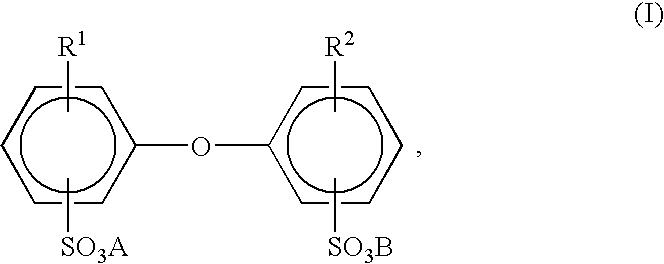Method for producing an aqueous dispersion of particles composed of a polymer and a fine-particle inorganic solid
a technology of inorganic solids and polymers, which is applied in the field of preparing an aqueous dispersion of particles composed of addition polymers and finely divided inorganic solids, can solve the problems of unavoidable preconditions for all synthesis routes, no information on the particle size and stability of titanium dioxide dispersions, and the use of freshly precipitated iron(ii/iii) oxide hydrate, etc., to achieve good performance properties, wide application, and balanced profile profil
- Summary
- Abstract
- Description
- Claims
- Application Information
AI Technical Summary
Benefits of technology
Problems solved by technology
Method used
Image
Examples
examples
[0097]The finely divided inorganic solid used for the examples below was silicon dioxide. Used as a representative example was the commercially available silicon dioxide sol Nyacol® 2040 (20 nm) from Akzo-Nobel. The SiO2 content of the aqueous solid-particle dispersion was 40% by weight, its pH 10. The values indicated in round brackets correspond to the diameter of the respective inorganic solid particles according to the manufacturer's indications.
[0098]The solids dispersion used in the examples met all of the requirements made of it, namely that one hour after its preparation, without stirring or shaking, at an initial solids concentration of ≧1% by weight, based on the aqueous dispersion of the solid, it contained more than 90% by weight of the originally dispersed solid in dispersed form; the dispersed particulate solids have a diameter ≦100 nm; and, moreover, the dispersed inorganic particulate solids exhibited a nonzero electrophoretic mobility in an aqueous standard potassiu...
1st example
[0099]A 2 l four-necked flask equipped with a reflux condenser, a thermometer, a mechanical stirrer and a metering device was charged under nitrogen atmosphere at from 20 to 25° C. (room temperature) and 1 bar (absolute) and with stirring (200 revolutions per minute) with 416.6 g of Nyacol® 2040 and then with a mixture of 2.5 g of methacrylic acid and 12 g of a 10% strength by weight aqueous solution of sodium hydroxide, added over the course of 5 minutes. Thereafter, 10.4 g of a 20% strength by weight aqueous solution of the nonionic surfactant Lutensole® AT18 (brand name of BASF AG, C16C18 fatty alcohol ethoxylate having 18 ethylene oxide units) were added over the course of 15 minutes to the stirred reaction mixture. Thereafter, 0.83 g of N-cetyl-N,N,N-trimethylammonium bromide (CTAB) in solution in 200 g of deionized water was metered in to the reaction mixture over 60 minutes. The reaction mixture was then heated to a reaction temperature of 76° C.
[0100]Prepared in parallel wer...
2nd example
[0106]A 500 ml four-necked flask equipped with a reflux condenser, a thermometer, a mechanical stirrer and a metering device was charged under nitrogen atmosphere at room temperature and 1 bar (absolute) and with stirring (300 revolutions per minute) with 100 g of Nyacol® 2040 and then 2.5 g of a 20% strength by weight aqueous solution of Lutensol® AT18 were added. After 5 minutes 0.2 g of CTAB in solution in 30 g of deionized water was metered in to the stirred reaction mixture over 30 minutes. Then an aqueous solution consisting of 1.88 g of a 45% strength by weight aqueous solution of Dowfax® 2A1 and 11.7 g of deionized water was added to the reaction mixture.
[0107]Prepared in parallel were feed stream 1, a monomer mixture consisting of 29.95 g of MMA, 29.95 g of n-BA and 0.10 g of MEMO, and feed stream 2, an initiator solution consisting of 0.9 g of sodium peroxodisulfate, 2 g of a 1-molar aqueous solution of sodium hydroxide, and 45 g of deionized water.
[0108]Subsequently, 5 g ...
PUM
| Property | Measurement | Unit |
|---|---|---|
| diameter | aaaaa | aaaaa |
| diameter | aaaaa | aaaaa |
| diameter | aaaaa | aaaaa |
Abstract
Description
Claims
Application Information
 Login to View More
Login to View More - R&D
- Intellectual Property
- Life Sciences
- Materials
- Tech Scout
- Unparalleled Data Quality
- Higher Quality Content
- 60% Fewer Hallucinations
Browse by: Latest US Patents, China's latest patents, Technical Efficacy Thesaurus, Application Domain, Technology Topic, Popular Technical Reports.
© 2025 PatSnap. All rights reserved.Legal|Privacy policy|Modern Slavery Act Transparency Statement|Sitemap|About US| Contact US: help@patsnap.com

